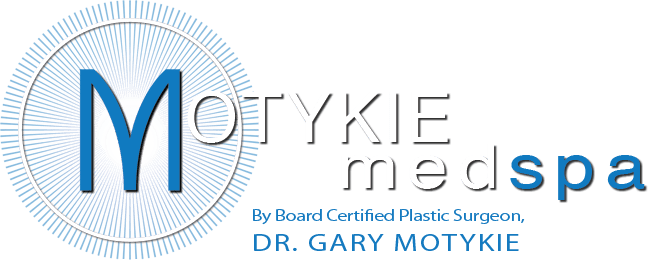Paradoxical Adipose Hyperplasia
CoolSculpting is a non-surgical procedure used to break down fat. This technique involves freezing and liquefaction of the fat cells which are later aspirated or naturally released from the body. Although this treatment is generally successful, there is a tiny risk of the treated area growing bigger instead of smaller, and this condition is called Paradoxical Adipose Hyperplasia (PAH).
If you are planning to undergo CoolSculpting, make sure you understand what is PAH, what causes it, the symptoms to watch out for, and the methods used to treat it. Board certified plastic surgeon Dr. Gary Motykie provides PAH treatment to patients in Beverly Hills, West Hollywood, Los Angeles, and surrounding communities.
What is PAH?
CoolSculpting uses extreme cold temperatures to break down fat cells. However, in some patients, this temperature causes the fat cells to expand instead of breaking down. The area that has been treated then grows larger. Larger fat cells require more nutrition and oxygen, and they grow in density, making the affected area harder. This condition called PAH begins to show up after a month or two of undergoing the procedure, but it can take 6 months to get a confirmed diagnosis.
What We Know of PAH?
Medical science has not yet identified any single cause of PAH, but the condition is more likely to develop in persons who undergo CoolSculpting. PAH is observed more in men than women, but there is no information about the underlying reason. Statistics show that 1 in 20,000 persons is affected by PAH, but it is important you understand this risk before you choose CoolSculpting.
CoolSculpting is not a complicated procedure, but it is possible that an error in performing it may lead to complications. Make sure you consult a board-certified and experienced plastic surgeon before you undergo this procedure. Ask them about their experience with PAH and the plan they have in place to help patients who develop the condition.
Symptoms of PAH
The PAH symptom that is easiest to recognize is a fatty lump in the treated area that looks like a stick of butter. This shape is thought to come from the applicator that CoolSculpting procedure uses. However, the fat deposits may take on a different shape, too.
Some patients notice a mild pain or tenderness on touching the treated area. Others may feel the skin growing harder, or some unexplained growth but no pain. Any of these symptoms could indicate PAH.
Some people begin to look as if they have gained weight after the procedure. If they have stuck to the lifestyle measures advised by their doctor, and this weight gain cannot be explained, it is time to see the doctor about the possibility of PAH.
How is PAH Treated?
Treatment of PAH involves removal of the excess fat using the technique of lipolysis. A laser-dependent liposuction technique commonly used is called Smartlipo. The patient is given a local anesthetic and laser is used to melt the fat which is then manually drained using suction.
Manual Lymphatic Drainage (MLD) Massage Treatment Post Surgery
The success of post-surgical advanced manual lymphatic drainage massage lies in its gentleness. Most experts believe that heat and deep massage are counterproductive in a post-surgical setting; thus, it is important that you NOT substitute deep tissue massage, Swedish massage, or other massage technique for this advanced treatment. Your specific treatment plan—including when to begin advanced MLD and how frequently you should receive treatments—will depend on the surgical procedure you had and your unique state of health.
Post-surgical MLD is an advanced technique requiring specialized training, and should only be performed by a licensed massage therapist. If you have had—or if you are planning to have—a mastectomy or a cosmetic procedure such as a facelift or liposuction.
Read more about post surgery massage for MLD.
Contact Motykie Med Spa in Beverly Hills, CA For More Information on Coolsculpting and Other Fat Removing Procedures:
Click here for Virtual Consultation
To see more services and treatments provided by Plastic Surgeon, Dr. Motykie in Beverly Hills | Los Angeles | West Hollywood and his team please visit:
